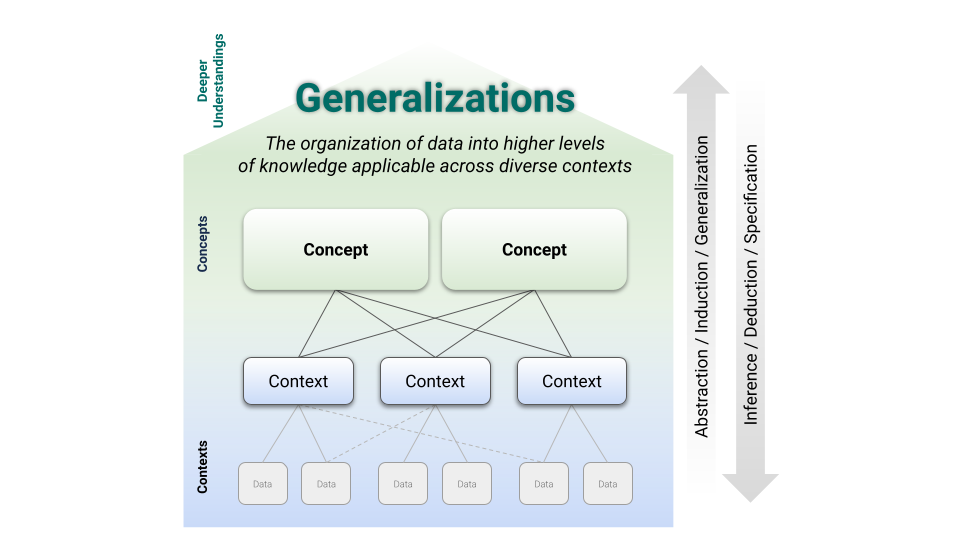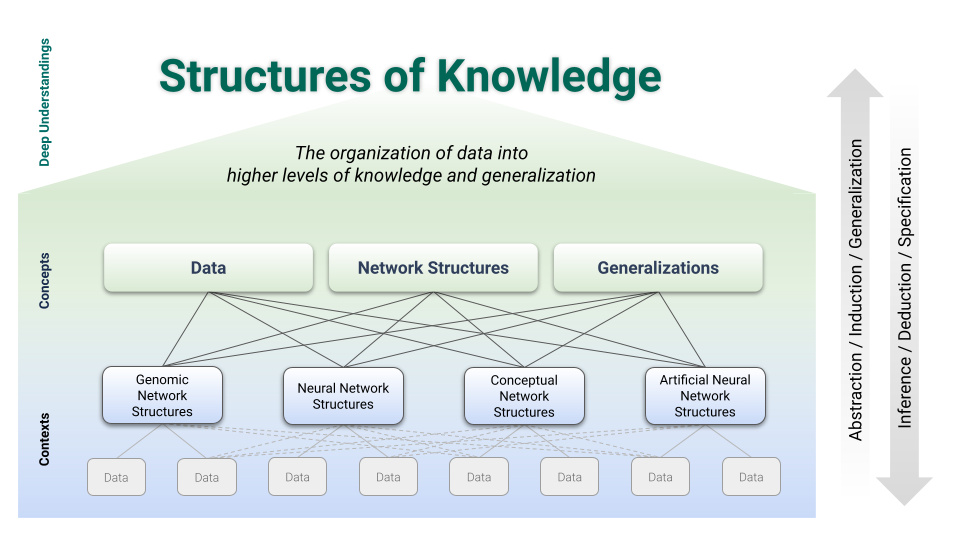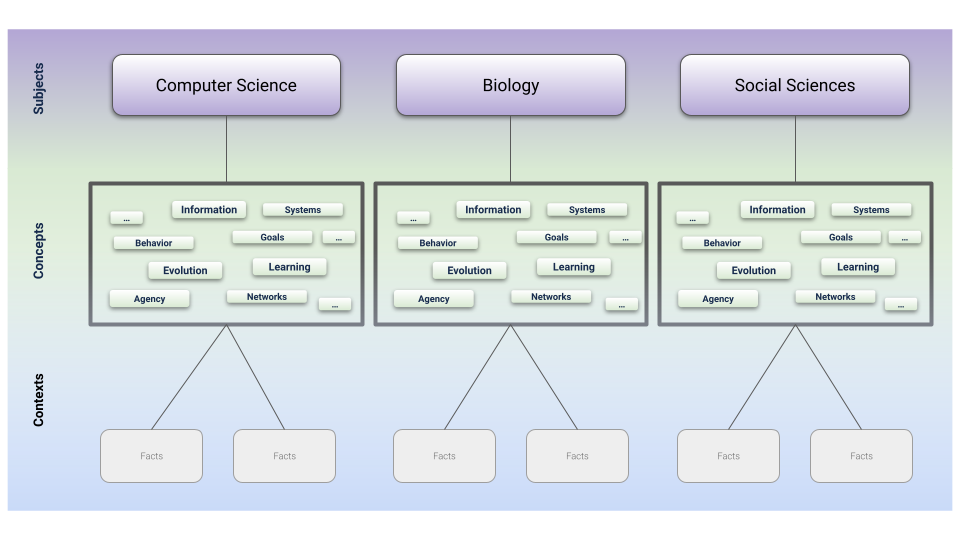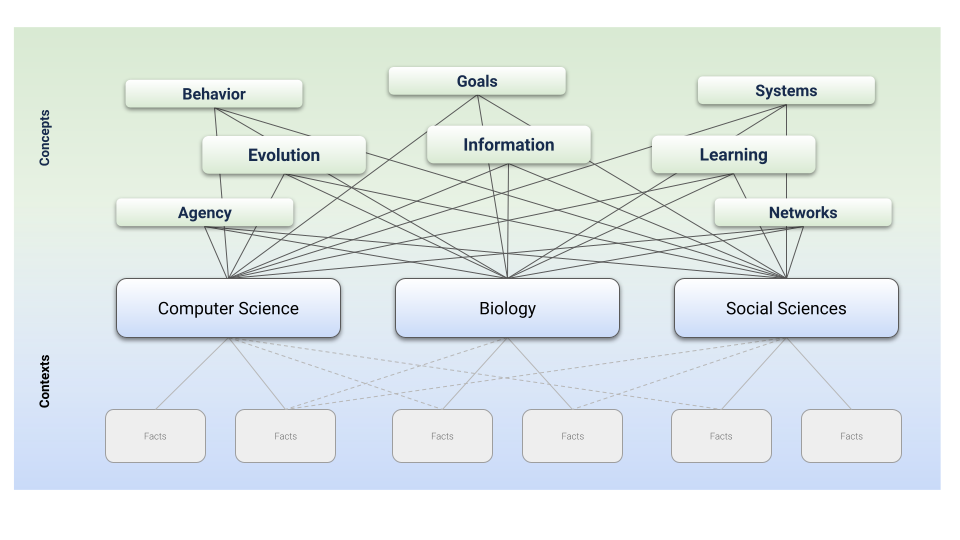Structures of Knowledge
Knowledge emerges from the networking of information. How humans come to understand these structures of knowledge within our world shapes our diverse worldviews and our capacities for effective and collective action on challenges of planetary sustainability.
Knowledge emerges from the networking of information
We can think of knowledge as like bricks in the construction of higher levels of understanding, like scientific theories. Importantly, knowledge itself is built up from the organization of smaller bits of information from the world around us. Since it is we humans, as individuals and collectives, that are organizing and structuring all of this information, understanding how structures of knowledge evolve can give you new tools for seeing and influencing the world around you.
Understanding the structures of knowledge in our world is a key to self-directed education and an adaptive school curriculum
By focusing on the relationship between the specifics of the world and the deeper generalizations within our understandings of the world, we can begin to make our implicit structures of knowledge more explicit. Structure of Knowledge (SoK) Diagrams can help us map and compare the conceptual landscapes of our world.
Of particular importance for the design of school curriculum is the ability to clarify disciplinary versus interdisciplinary competence, in terms of the structures of knowledge that are learned and applied.
Scientific literacy requires both disciplinary and interdisciplinary competencies!
Learn more about how to analyze, interpret, understand, and influence the structures of knowledge that shape our world! Structure of Knowledge diagrams, like those above, can help us become metacognitively aware of the concepts that shape our worldviews, as individuals and communities.
Structure of Knowledge Diagrams
Simple diagrams can help us map and understand the structures of knowledge in our world.
References
Erickson, H. L., Lanning, L. A., & French, R. (2017). Concept-based curriculum and instruction for the thinking classroom. Corwin Press.
Stern, J., Ferraro, K., Duncan, K., & Aleo, T. (2021). Learning That Transfers: Designing Curriculum for a Changing World. Corwin Press.





